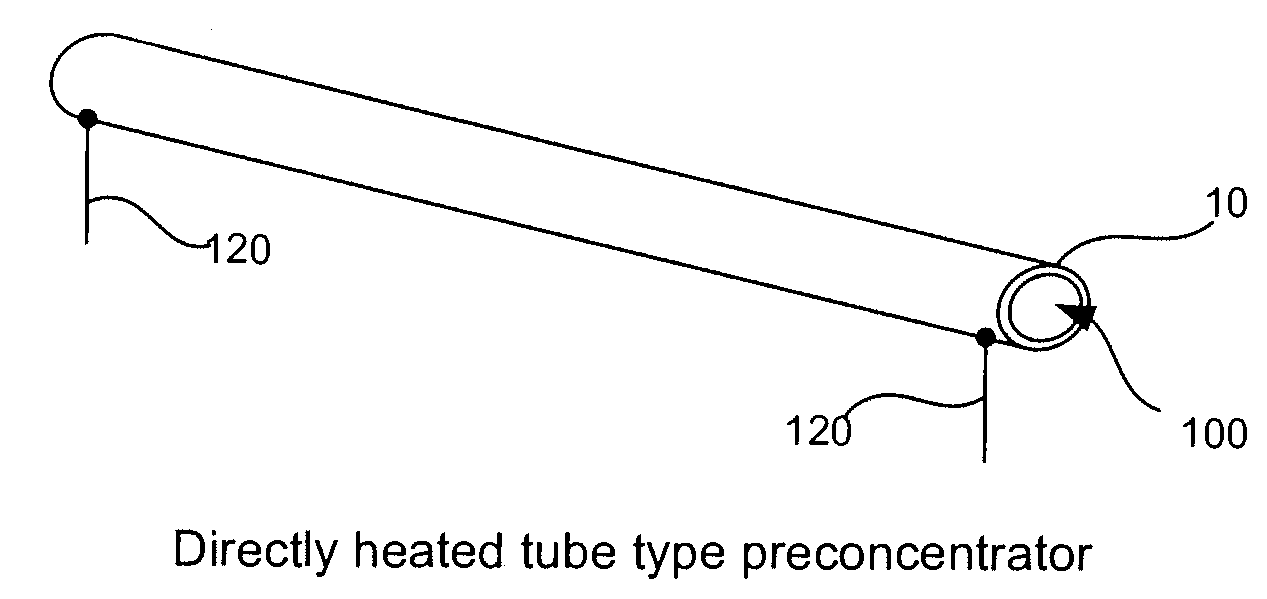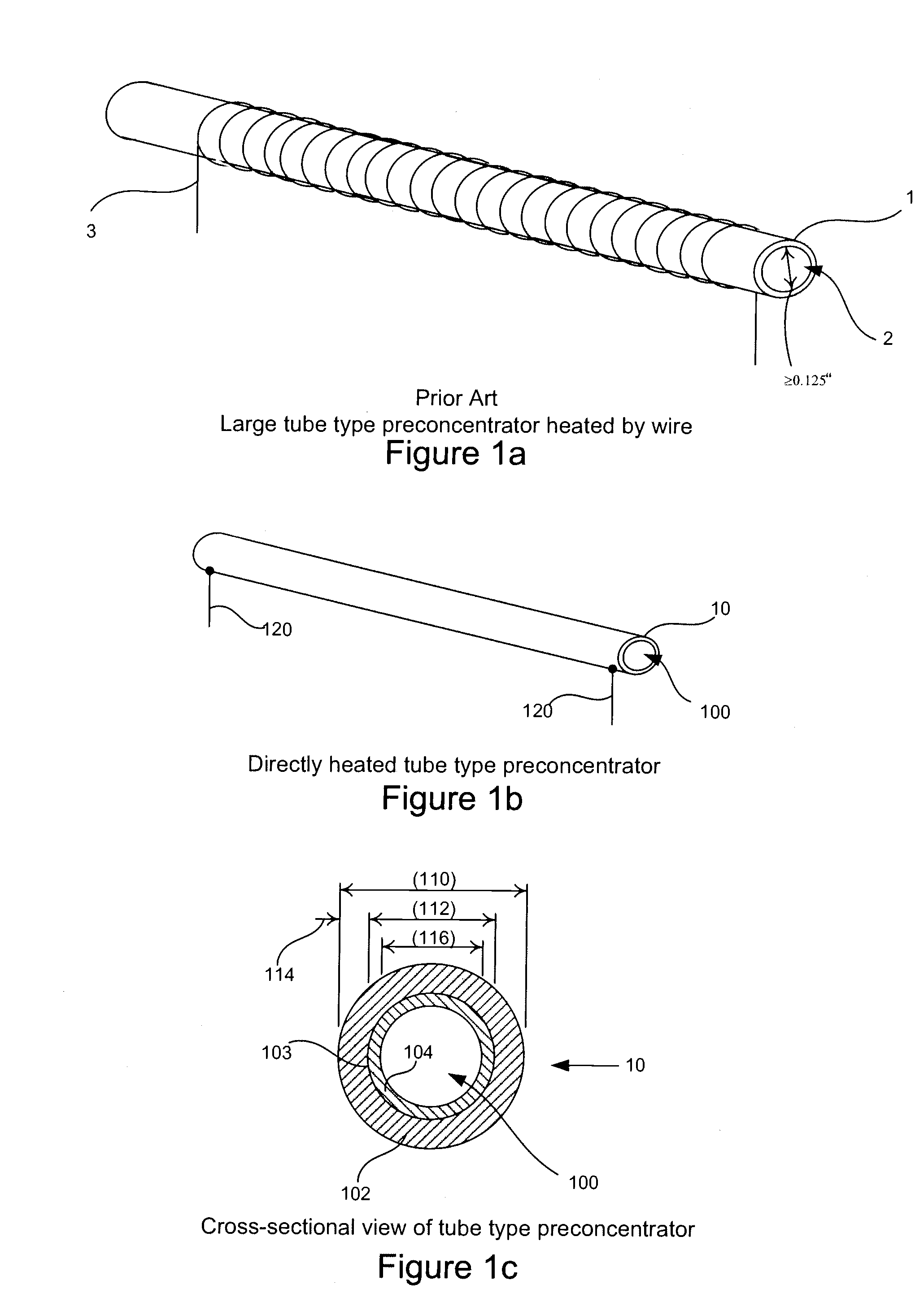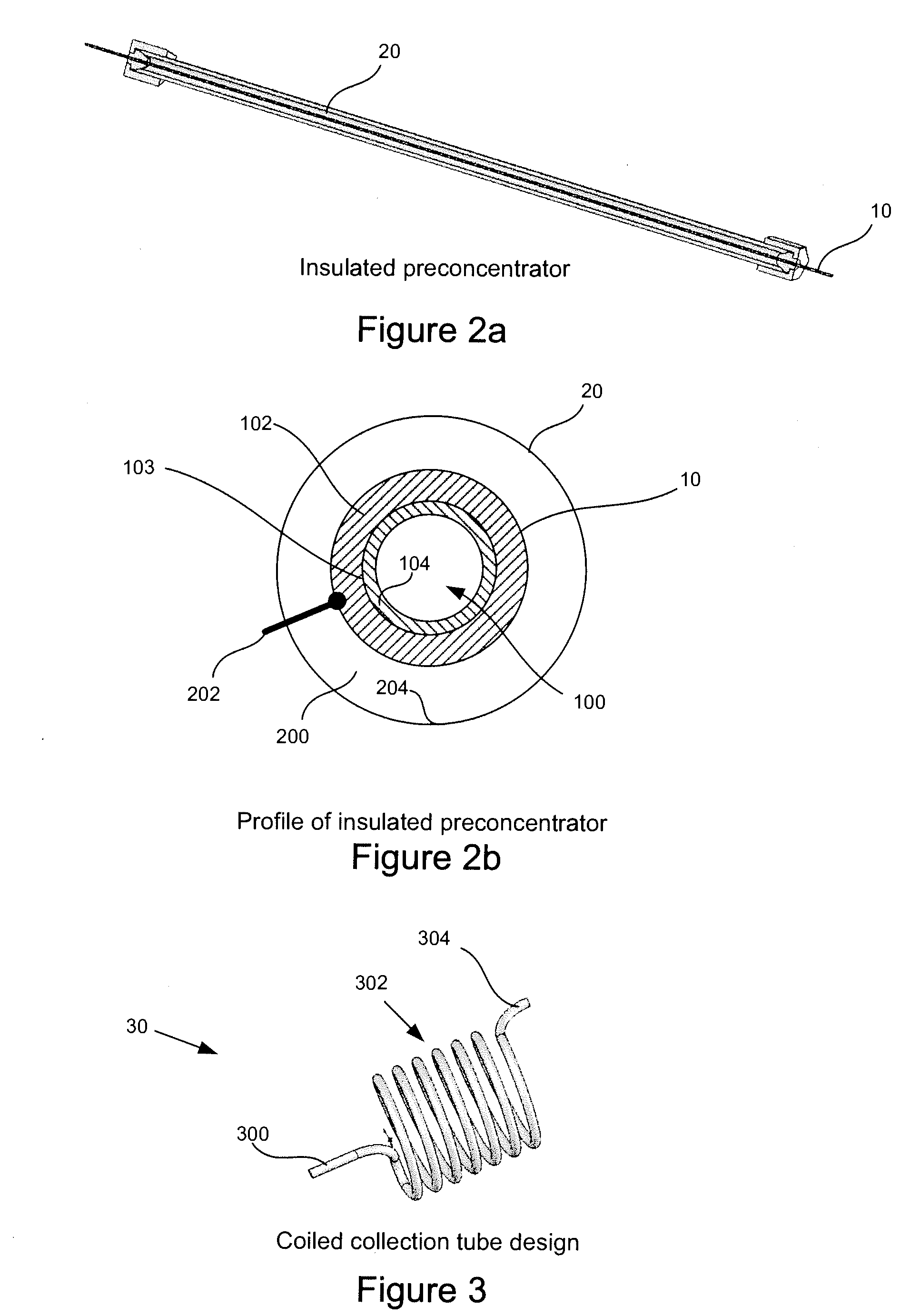Preconcentrators and methods of making and using the same
a preconcentrator and preconcentrator technology, applied in the field of chemical sensing methods, can solve the problems of limiting utility, bulky and non-portable, heavy power consumption, etc., and achieve the effects of improving the performance and operability of the chemical sensing system, facilitating repeated thermal cycling, and low power requirements
- Summary
- Abstract
- Description
- Claims
- Application Information
AI Technical Summary
Benefits of technology
Problems solved by technology
Method used
Image
Examples
Embodiment Construction
[0038]Embodiments of the present invention will now be described in detail with reference to the drawings, which are provided as illustrative examples so as to enable those skilled in the art to practice the invention. Notably, the figures and examples below are not meant to limit the scope of the present invention to a single embodiment, but other embodiments are possible by way of interchange of some or all of the described or illustrated elements.
[0039]For purposes of this description, the term adsorption refers to a process where a target chemical or compound is accumulated on the surface of an adsorbing material and adsorption refers to a process where a target chemical or compound is taken up within the volume of the absorbing material rather than on the surface of the material. For purposes of this description, desorption refers to a converse process in which a target is released from a material. For purposes of this description, sorbent material refers to material that has a...
PUM
| Property | Measurement | Unit |
|---|---|---|
| diameter | aaaaa | aaaaa |
| volume ratio | aaaaa | aaaaa |
| wall thickness | aaaaa | aaaaa |
Abstract
Description
Claims
Application Information
 Login to View More
Login to View More - R&D
- Intellectual Property
- Life Sciences
- Materials
- Tech Scout
- Unparalleled Data Quality
- Higher Quality Content
- 60% Fewer Hallucinations
Browse by: Latest US Patents, China's latest patents, Technical Efficacy Thesaurus, Application Domain, Technology Topic, Popular Technical Reports.
© 2025 PatSnap. All rights reserved.Legal|Privacy policy|Modern Slavery Act Transparency Statement|Sitemap|About US| Contact US: help@patsnap.com



